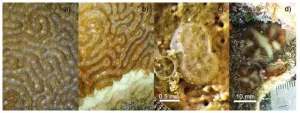Ishikawa, Japan -- Although grasping objects is a relatively straightforward task for us humans, there is a lot of mechanics involved in this simple task. Picking up an object requires fine control of the fingers, of their positioning, and of the pressure each finger applies, which in turn necessitates intricate sensing capabilities. It’s no wonder that robotic grasping and manipulation is a very active research area within the field of robotics.
Today, industrial robotic hands have replaced humans in various complex and hazardous activities, including in restaurants, farms, factories, and manufacturing plants. In general, soft robotic grippers are better suited for tasks in which the objects to be picked up are fragile, such as fruits and vegetables. However, while soft robots are promising as harvesting tools, they usually share a common disadvantage: their price tag. Most soft robotic gripper designs require the intricate assembly of multiple pieces. This drives up development and maintenance costs.
Fortunately, a research team from the Japan Advanced Institute of Technology (JAIST), led by Associate Professor Van Anh Ho, have come up with a groundbreaking solution to these problems. Taking a leaf from nature, they have developed an innovative soft robotic gripper called ‘ROSE,’ which stands for ‘Rotation-based Squeezing Gripper.’ Details about ROSE’s design, as well as the results of their latest study, have been presented at the Robotics: Science and Systems 2023 (RSS2023) conference.
What makes ROSE so impressive is its design. The soft gripping part has the shape of a cylindrical funnel or sleeve and is connected to a hard circular base, which in turn is attached to the shaft of an actuator. The funnel must be placed over the object meant to be picked up, covering a decent portion of its surface area. Then, the actuator makes the base turn, which causes the flexible funnel’s skin to wrap tightly around the object, as shown in this video. This mechanism was loosely inspired by the changing shapes of roses, which bloom during the day and close up during the night.
ROSE offers substantial advantages compared to more conventional grippers. First, it is much less expensive to manufacture. The hard parts can all be 3D-printed, whereas the funnel itself can be easily produced using a mold and liquid silicone rubber. This ensures that the design is easily scalable and is suitable for mass production.
Second, ROSE can easily pick up a wide variety of objects without complex control and sensing mechanisms. Unlike grippers that rely on finger-like structures, ROSE’s sleeve applies a gentler, more uniform pressure. This makes ROSE better suited for handling fragile produce, such as strawberries and pears, as well as slippery objects. Weighing less than 200 grams, the gripper can achieve an impressive payload-to-weight ratio of 6812%.
Third, ROSE is extremely durable and sturdy. The team showed that it could successfully continue to pick up objects even after 400,000 trials. Moreover, the funnel still works properly in the presence of significant cracks or cuts. “The proposed gripper excels in demanding scenarios, as evidenced by its ability to withstand a severe test in which we cut the funnel into four separate sections at full height,” remarks Assoc. Prof. Ho, “This test underscores the gripper's exceptional resilience and optimal performance in challenging conditions.”
Finally, ROSE can be endowed with sensing capabilities. The researchers achieved this by placing multiple cameras on top of the circular base, pointing at the inside of the funnel, which was covered in markers, whose position could be picked up by the cameras and analyzed through image processing algorithms. This promising approach allows for size and shape estimation of the grasped object.
The research team notes that ROSE could be an enticing option for various applications, including harvesting operations and sorting items in factories. It could also find a home in cluttered environments such as farms, professional kitchens, and warehouses. “The ROSE gripper holds significant potential to revolutionize gripping applications and gain widespread acceptance across various fields,” concludes Assoc. Prof. Ho, “Its straightforward yet robust and dependable design is set to inspire researchers and manufacturers to embrace it for a broad variety of gripping tasks in the near future.”
Let us hope ROSE manages to become a blooming success!
###
Reference
Title of original paper:
ROSE: Rotation-based Squeezing Robotic Gripper toward Universal Handling of Objects
Authors:
Son Tien Bui, Shinya Kawano, Van Anh Ho
Conference:
Robotics: Science and Systems 2023 (RSS2023)
DOI:
10.15607/RSS.2023.XIX.090
About Japan Advanced Institute of Science and Technology, Japan
Founded in 1990 in Ishikawa prefecture, the Japan Advanced Institute of Science and Technology (JAIST) was the first independent national graduate school in Japan. Now, after 30 years of steady progress, JAIST has become one of Japan’s top-ranking universities. JAIST counts with multiple satellite campuses and strives to foster capable leaders with a state-of-the-art education system where diversity is key; about 40% of its alumni are international students. The university has a unique style of graduate education based on a carefully designed coursework-oriented curriculum to ensure that its students have a solid foundation on which to carry out cutting-edge research. JAIST also works closely both with local and overseas communities by promoting industry–academia collaborative research.
About Associate Professor Van Anh Ho from Japan Advanced Institute of Science and Technology, Japan
Dr. Van Anh Ho obtained M.S. and PhD degrees from Ritsumeikan University in 2009 and 2012, respectively. He currently leads the Soft Haptics Lab at JAIST as an Associate Professor. His main research interests are soft robotics, tactile sensing, robotic manipulation, and tangible devices. He has published over 60 scientific papers in these topics. He was awarded the IEEE Nagoya Section Young Researcher Award in 2019 and the Best Paper Finalist Award in the 2020 IEEE International Conference on Soft Robotics.
Funding information:
This study was conducted with the support of the Japan Science and Technology Agency (JST) and the Strategic Creation Research Promotion Program “Creating the Future with IoT” research area (JPMJPR2038) under the research project titled “Development of Skin-Sensory Transceiver for Achieving Touch-based IoT.”
END




